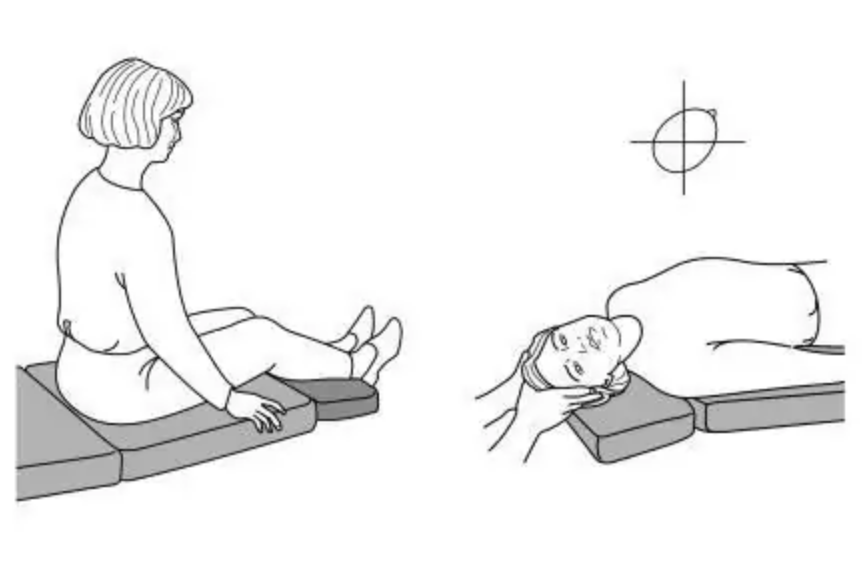Benign Paroxysmal Positional Vertigo (BPPV) is the most common vestibular (inner ear) disorder and the most common cause of vertigo or dizziness. It is a false sensation of spinning or movement. While it’s not life-threatening, it can significantly impact your daily life.
What is BPPV?

BPPV occurs when small calcium crystals (called otoconia), which are normally located in a part of the inner ear called the utricle, become dislodged and move into one of the semicircular canals. These canals help control our sense of balance by detecting head movements through the fluid that flows inside them. When the crystals enter the canals, they disrupt the normal fluid movement, sending incorrect signals to the brain, which results in the feeling of spinning or vertigo.
BPPV stands for:
- Benign – It’s not life-threatening.
- Paroxysmal – The vertigo or dizziness comes in sudden, short spells.
- Positional – The symptoms are triggered by specific head positions or movements.
- Vertigo – The main symptom is a false sense of spinning or movement.
Symptoms of BPPV
People with BPPV typically experience short, intense episodes of vertigo or dizziness that last less than a minute. These episodes are often triggered by changes in head position, such as rolling over in bed, looking up, bending over, or quick head movements. Alongside the feeling of dizziness, people can also experience:
- Nausea or vomiting
- A sense of imbalance or unsteadiness
- Light-headedness
Between episodes, you can feel completely normal, although some may experience an ongoing sense of imbalance or mild dizziness.
What Causes BPPV?
For many people, there isn’t a clear cause. However, it can be more common in older adults, and there are certain factors that may increase the risk, such as:
- Head trauma or concussion
- Inner ear infections or conditions
- Migraines
- Prolonged bed rest, such as after surgery
- Vitamin D deficiency
- Osteoporosis
- Diabetes
In some cases, BPPV can just start all of a sudden. Many people report experiencing vertigo for the first time when they wake up in the morning, particularly when getting out of bed.
Diagnosing BPPV
BPPV can usually be diagnosed based on your symptoms and an assessment. The ‘Dix-Hallpike test’ is often used to confirm BPPV. During this test, the head is moved into specific positions to see if the dislodged crystals trigger your vertigo or dizziness and we’ll be looking out for a specific eye movement called nystagmus, which is a telltale sign of BPPV.

Importantly, BPPV does not cause constant dizziness, headaches, fainting, or neurological symptoms like numbness or difficulty speaking. If you experience any of these additional symptoms, it’s important to seek further medical advice, to just check there is nothing else underlying going on.
Treatment of BPPV
Fortunately, BPPV is highly treatable in most cases through simple mechanical techniques known as Canalith Repositioning Maneuvers. The most common of these is the Epley manoeuvre, which uses a series of guided head movements to reposition the dislodged crystals from the semicircular canals back into their correct location in the utricle.
Each manoeuvre takes just a few minutes and is often successful after one to three treatments. However, it’s important to have this performed by a trained professional who can properly assess which semicircular canal is affected, as there are different variants of BPPV, each requiring a specific approach.
What Happens After Treatment?
Most patients experience significant relief after treatment, this can happen quite quickly, although not always. However, some people may still feel slightly unsteady or sensitive to movement for a few days or weeks. In these cases, further follow-up may be needed to help retrain the balance system and improve stability.
Can BPPV Come Back?
BPPV can come back, with some studies suggesting that as many as 50% of people may experience it again within five years, particularly if it was initially caused by trauma. If it does reoccur, it’s important to seek professional help again to confirm the diagnosis and ensure the appropriate manoeuvre is used for treatment.
Why Seek Professional Help?
While BPPV is a common and treatable condition, it’s essential to consult a healthcare professional trained in vestibular disorders. Not all general practitioners are familiar with the different forms of BPPV and their respective treatments, so it’s important to work with someone experienced in diagnosing and managing vestibular issues.
At goPhysio, our team is trained in diagnosing and treating BPPV using proven methods to quickly alleviate symptoms and get you back to your daily life. If you’re experiencing dizziness or vertigo, don’t wait – contact us today for a thorough assessment and personalised treatment plan.



